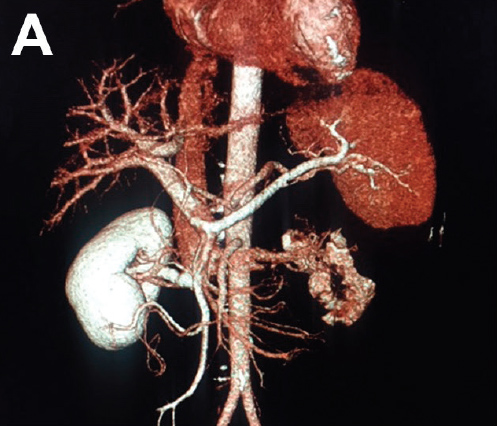 Download
Download
Ricardo de Souza Alves Ferreira, MD1,2; José Luis Attab dos Santos, MD2; Clemente Greguolo, MD2; José Fábio Fabris, Jr, MD2; Marcelo D’anzicourt Pinto, MD2; Alan Nascimento Paiva, MD3; Vicente Paulo Resende, Jr, MD3; César Franco de Souza, MD4; Leandro Coumbis Mandaloufas, MD5; Márcio Alves de Urzêda, MD6; Renato Sanchez Antonio, MD1,2
53-year-old man with stable coronary disease and dyslipidemia was admitted with sudden pain of severe intensity in the left flank, initiated at about 4 hours prior, with irradiation to the pelvic region, associated with vomiting. He was evaluated in the emergency department, and was suspected to have pyelonephritis and/or renal lithiasis. At physical examination, he had positive Giordano sign and no fever. Hemogram showed leukocytosis and shift to the left, non-infectious routine urine, and renal injury (creatinine, 1.4 mg/dL). An empiric antibiotic was started. He mentioned palpitations the night before. Electrocardiogram at admission showed sinus rhythm and absence of acute ischemia signs. He kept refractory pain, even after opioid analgesia. A computed tomography scan of the abdomen was performed with contrast, showing left renal hypoperfusion and a suggestive image of thrombus in the left renal artery.